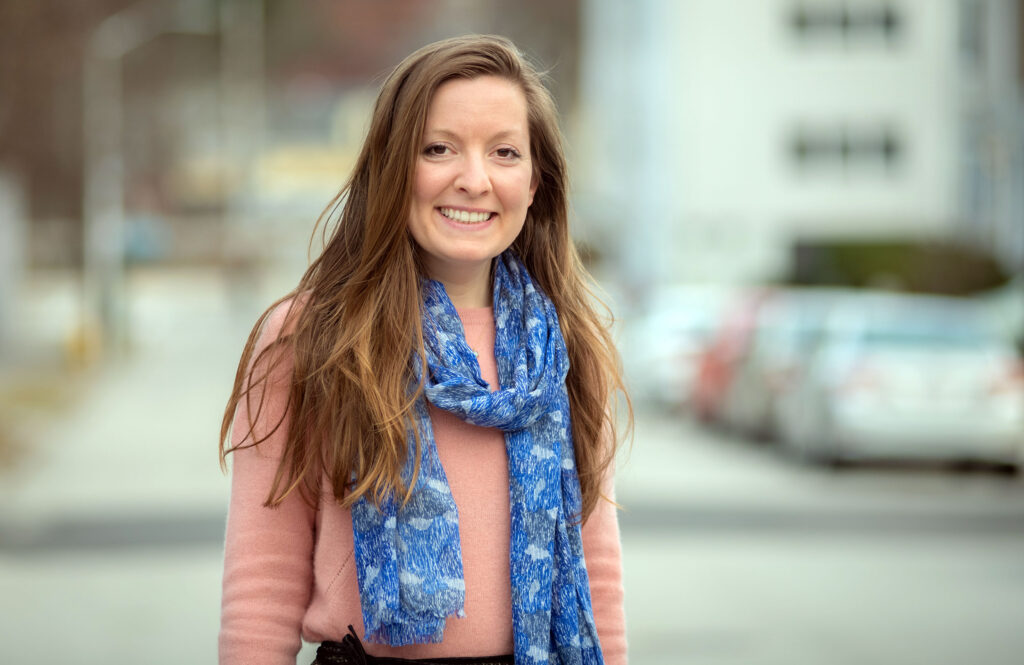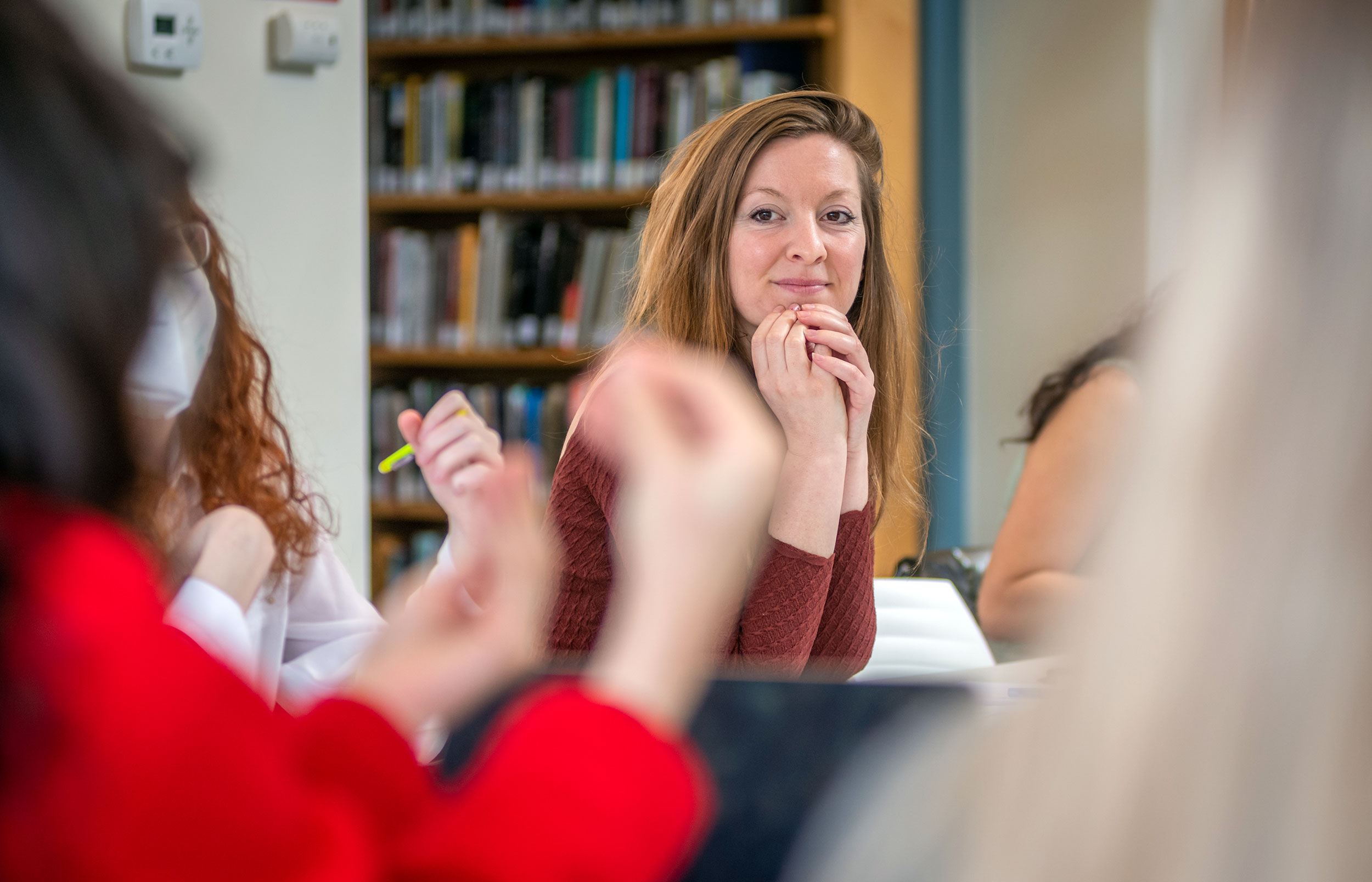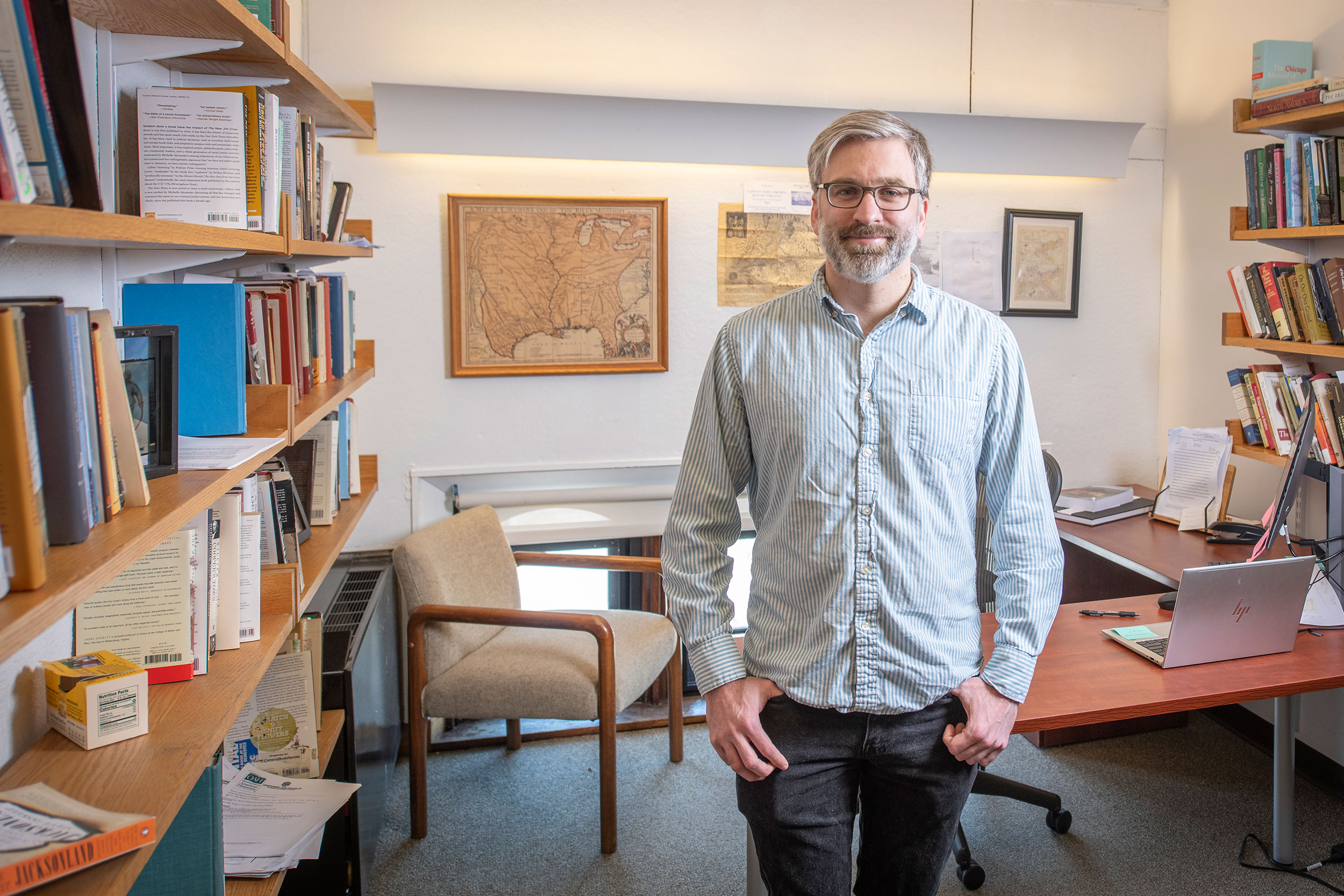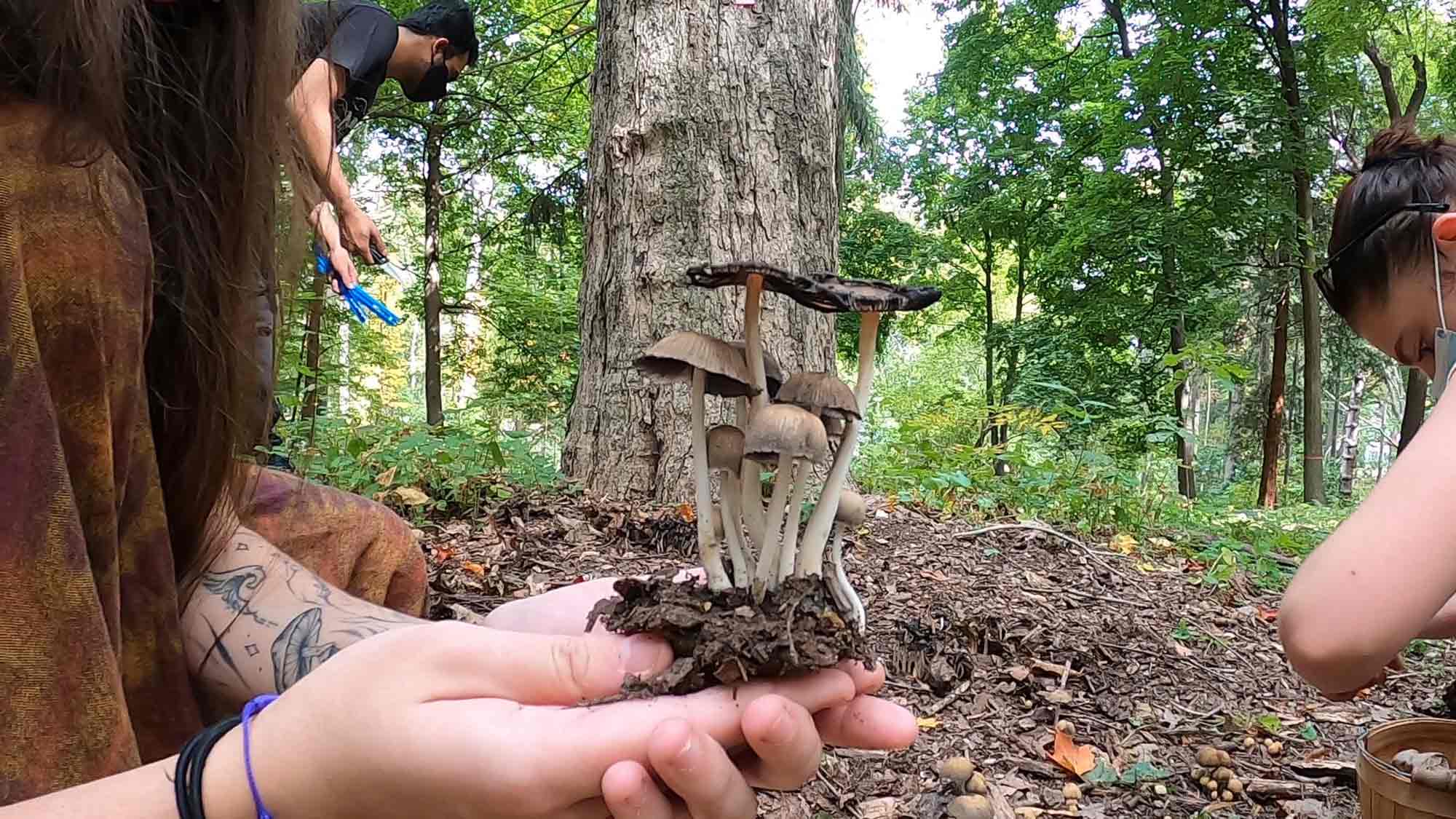In her new book, “Vanishing Vienna: Modernism, Philosemitism, and Jews in a Postwar City,” Rose Professor of Holocaust Studies and Jewish Culture Frances Tanzer examines how Austrians reimagined Vienna during and after the Nazi period. Tanzer’s book explores how a city, once known for its robust Jewish presence, reimagined its culture in a context marked by the devastating absence of this community.
“Jews and non-Jews had cocreated their identities and urban culture before 1938,” says Tanzer, a core faculty member in Clark’s Strassler Center for Holocaust and Genocide Studies and an associate professor in the Department of History. “But the Holocaust destroyed a network of intimate relations between Jews and non-Jews together with the culture produced from that complex interweaving of lives and fates. This is, of course, in addition to and inseparable from the destruction of the pre-war Jewish community itself.”
Before Anschluss, the annexation of Austria by Nazi Germany, about 170,000 Jews and 80,000 mixed-Jewish-Christian residents lived in Vienna, Tanzer writes. Within two years, the Nazis had forced 35,000 Jews into ghettoes and concentration camps. Many thousands more emigrated, and by the 1960s, records show that only 6,000 to 8,000 Jews remained in Vienna.
In the 1940s, however, small numbers of Jewish artists and popular performers began returning to Vienna. They often faced enthusiastic audiences, according to Tanzer. After 11 years of exile, Jewish comedian Armin Berg, for example, premiered at a sold-out performance in 1949 Vienna, garnering a five-minute standing ovation before he started, she writes.
“This surprised me because antisemitism was so virulent in the postwar period. So, I wanted to understand what such selective praise of Jewish figures meant in the post-Holocaust context, and how a culture that had been so shaped by a real and an imagined Jewish presence, could reimagine itself in the absence of that population,” Tanzer says.
Austrians responded to the challenges of cultural reconstruction and the uncanny of Jewish absence in a surprising way, according to Tanzer. They made philosemitism a foundational component of postwar Austrian identity and culture.
Philosemitism can be challenging to define, she explains. “It is a celebration of stereotypes of Jews and Jewish culture, having little to do with real Jews. Philosemitism existed alongside antisemitism since the end of the 19th century. In Vienna and elsewhere in Central Europe, it was evidence of a long-standing discourse that was pervasive before the Nazi period.”
This discourse often took the form of a “cultural code,” according to Tanzer. Regardless of the presence or absence of Jews, antisemites often denigrated urban spaces, such as the coffeehouse or even Vienna itself, and modern cultural products by labelling them as “Jewish” and “foreign.” Meanwhile, philosemites celebrated the same spaces and materials as evidence of cultural dynamism.
Philosemitism resurfaced intensely after 1945 but also transformed, she says. Instead of being viewed in opposition to an authentic national culture, it became the embodiment of Austrian culture, Tanzer explains.
“After 1945,” she says, “the nation adopted selective Jewish presence, the city, and modernism as symbols of Austrian redemption.”
A Q&A with Frances Tanzer
In a recent interview, Tanzer discussed her new book, how she draws upon her education and work as an artist, and what she’s working on now.
Why did you call your book “Vanishing Vienna”?
It has a double meaning. The first meaning is that the city is really vanishing during the period I examined — from 1938 to the late 1950s. The city that is co-created by Jews and non-Jews vanishes, and the city becomes something else. Of course, cities are always changing; this is a part of urban experience. But in this case, the vanishing of the city is wrapped up in — the result of — the history of the Holocaust and its long-term consequences.
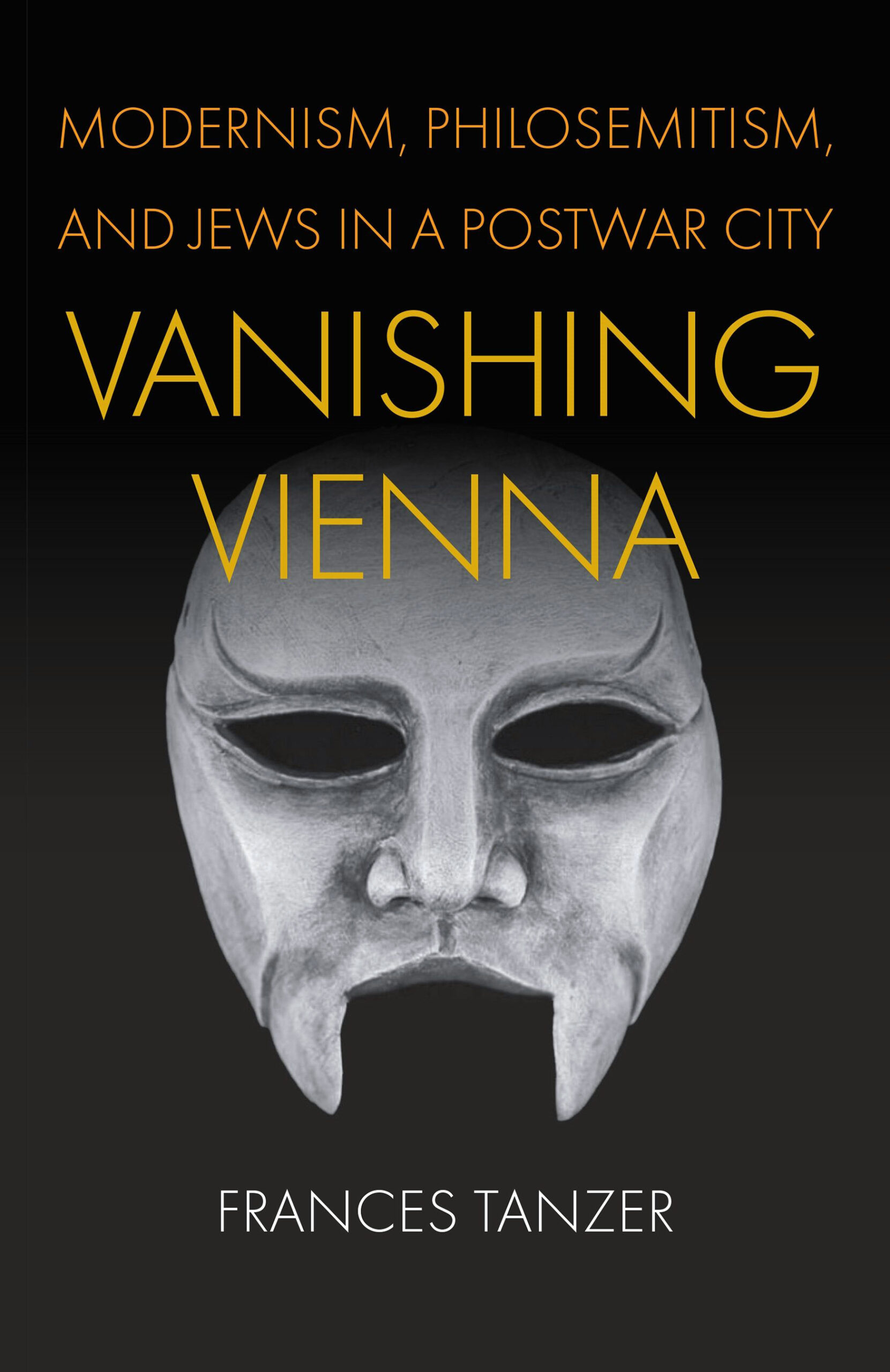
The second reason why I called it “Vanishing Vienna” is because there’s also a fascination in the postwar period with the idea that the Jewish presence in Vienna has “vanished” and must be rediscovered. Postwar Austrians did not actually want Jews to return as an integrated minority. They certainly did not want to discuss the reasons why Jews had “vanished,” which would have raised their own complicity in the Nazi period. Rather, by lamenting the absence of Jews — which was first discussed as an absence of exciting culture — they were able to achieve three things: first, to create distance between Austria and National Socialists; second, to present Austria as a part of liberal democratic Europe, and finally, to identify Austrians as victims — now, of Jewish absence. It is a highly paradoxical and troubling position and my book tries to tease out and historicize the paradoxes.
My book also proposes that talking about a vanished Jewish culture and presence has had little to do with Jews, although it impacted those who lived in Vienna. Rather, it was typically about the self-actualization of Austrians — namely, their desire to redefine the boundaries of Austrian culture and distinguish themselves from repudiated political groups. What is interesting is that the redemptive power of discovering Jews has helped Austrians to re-define themselves in a number of fraught political moments, not only in the immediate postwar period when the need to distinguish themselves from National Socialists and Germans was grave and existential.
Why did you focus on this period in Austria?
I wanted to show that the process of creating an Austrian culture was continuous from the Anschluss to the post-war period. Actually, framing the tale in terms of the translation of the dynamics of Jewish presence and absence, philosemitism and antisemitism across epochs set the stage for a major revision of the standard chronologies and geographies associated with cultural reconstruction after World War II and the Holocaust. Until recently, studies have tended to begin with the end of World War II and seldom include a focus on refugees and displacement. But I start with 1938 and include the story of refugees.
The first half of the book traces the contradictory process of the Aryanization and emigration of Viennese culture from 1938 to 1945. In the second half of the book, I argue that those two processes — of Aryanization and emigration — shaped the postwar period in complex and contradictory ways. It was important to me to expose the extent to which the process of Aryanization reverberated after 1945. During the Nazi period, in addition decimating the Jewish population and seizing their property, non-Jewish Austrians established an interpretation of the cultural life and history of Vienna without Jews. After 1945, many aspects of that large-scale cultural revision persisted, but were often masked by images of aesthetic discontinuity and intentional misunderstandings about what had actually transpired during the Nazi period.
Including displacement and emigration in the story of Austria’s cultural reconstruction was likewise important to me and is also very unusual: I wanted to show the extent to which Jewish refugees participated in cultural reconstruction and eventually tried to assert their presence in a totally stifling context. The fact that Jewish refugees participated in shaping Austrian culture after 1938 and again after 1945 should serve as an example of how national cultures are often produced outside of the territorial boundaries of the state — and sometimes by those people who had been violently excluded and erased.
How does your work as an artist inform the book?
I was actually a studio art major — in addition to a history major — when I went to University of Toronto long ago. Subsequently, I worked in Berlin as a painter (among many other odd jobs) before going to get my PhD in history. My art professors were shocked that I went to get my PhD in history of all things! But I see my role as a historian as deeply intertwined with my artistic practice. In addition to providing me with a community that has sustained me now for decades, my training as an artist taught me how to see the world, reorganize it to reveal its contradictions, and then, how to give it back as something new — sometimes as art; sometimes as scholarship. This has been the most important lesson my life: There is no way to quantify its value.
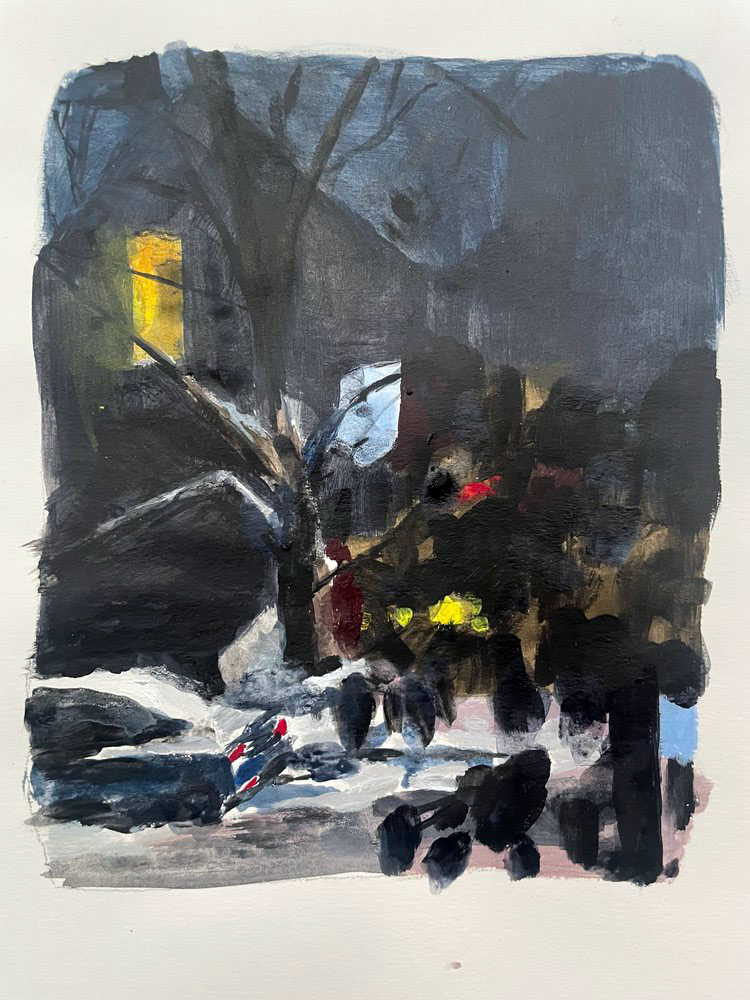
There are other more specific ways that my art practice has influenced — and continues to influence — my trajectory as a historian of the Holocaust and its aftermath. One of the first themes I explored as an artist was the idea of a representation of absence, which shouldn’t be confused with the absence itself. Rather, it is an awareness of an absence or of something missing. I became fascinated with trying to document this awareness in paint years before I tried my hand at documenting it in historical writing. The second, but related, major theme of my art practice is an attempt to catalogue ephemeral experiences that lack a clear representational framework. I try to capture those ephemeral experiences on paper or canvas and therefore to make them graspable.
Both these themes are also present in this book through its examination of ephemeral performance and through the book’s investment in documenting discourses of vanishing. There is also more obvious way that being an artist has impacted the book: I’m clearly interested in artists. I tried, in “Vanishing Vienna,” to take very seriously the challenges that artists, performing artists in particular, have establishing meaning for themselves and their audiences after their forced displacement. I have also long been fascinated by the ways that the meaning of a work of art can transform and be manipulated within different ideological contexts and as it enters the art market.
How does the history you trace in your book connect to current-day Austria?
I was very influenced by the 2015 refugee crisis in Europe. I was doing research for this book at that time in Vienna. Initially, refugees were greeted at the train in Vienna with signs and assistance—not unlike the scenes I documented in my book of Jewish performers encountering enthusiastic crowds upon their return from exile in the late 1940s. Politicians from the mainstream political parties went to the train stations for photo opportunities. What was interesting was that the memory of the Holocaust was constantly invoked: “We should protect refugees in the present because of the history of the Holocaust. It is our duty.”
Some people proposed that “it’s a tragedy that Jews are no longer here, because they contributed to our culture, and refugees now are serving the same functions.” Of course, this needed to be qualified because Vienna actually had a growing Jewish population at this time. But there was this idea that one lesson to be learned from the Jewish absence produced by the Holocaust was a need to embrace refugees, many of whom were coming from Syria, because they might help create a dynamic culture in Vienna just as Jews had in the past. I was and remain very sympathetic to this view but something about it troubled me — and I will get to that in a moment.
“A study of displacement should not only focus on the people who flee, but also on the places and people that they leave behind.”
— FRances tanzer
On the right, politicians often espoused Islamophobia and said something like, “We need to protect the city from these [Muslim] refugees, because they threaten what we believe to be our European cultural orientation.” From this perspective, a ‘European cultural orientation’ often requires the protection/preservation of the figure of the “Jew,” who is imagined as an ultimate victim. Meanwhile, refugees were often imagined as their new perpetrators. These are examples of a contemporary translation of the philosemitic dynamic I wrote about — once again, differently located Viennese and Austrians redraw the boundary of their culture via absent but desired symbolic Jews.
But what is also interesting is that, sometimes, Austrians and Central Europeans more generally articulated aspects of these two positions at the same time, even though they seemed completely contradictory. One of the points I make in the book is that both positions, though frequently deployed by political opponents, share a core and, to my mind, problematic assumption: They discuss diversity in terms of presence and absence, which doesn’t work very well because it always hold the “other” group — Jews, Muslims, refugees, or someone else — as distinct and separate. They’re imagined as visitors with gifts or outsiders rather than as integral to urban culture. Such discussions have only intensified and become even more fraught in the intervening decade, also in our own context in the United States.
How do you integrate your research into the classroom?
First, in terms of chronology, I usually focus a great deal on the pre-Nazi period and on the postwar period. The only way, I propose, to expose the scale and multiple meanings of the consequences of the Holocaust is to understand significance of the Jewish presence that preceded it.
I teach classes on the Holocaust, antisemitism, refugees, and Central and East Central Europe — each of these classes is inspired by my research in different ways. But I want to focus here on two classes that are kind of inversions of each other. One is a class on refugees, so we study the people who move. And another is a class on borderlands: there, we study the way the borders are drawn and redrawn.
One of the arguments that is threaded through those two classes is also an argument of the book: A study of displacement should not only focus on the people who flee, but also on the places and people that they leave behind. Such places and the people who inhabit them reshaped by the absence of those people who are no longer there, but who might still be present in traces and in memory. It is also the case that the remaining population typically makes great efforts to suppress the memory of displacement and their complicity in it—this act of suppression should inspire the researcher to dig deeper and to read against the grain! I hope to teach my students how to do this work—how to turn a silence or an absence into a source and a space for inquiry.
What are your current projects?
I’m working on two books. One is about my family history. A distant branch of my family were Klezmers from the middle of the 19th century until the last family member died in 2019. Their stories allow me to think about a question that has long fascinated to me: What happens to cultural materials that are produced in multiethnic borderlands when those places cease to exist? What is the afterlife of these cultural products once they’re de-territorialized?
The question is really dramatized in the case of Klezmer because it was dynastic: In the 19th-century, the right to serve as a Klezmer band in a given town was inherited and passed through the sons.
The other book project is about portraiture. It will be a collection of essays, each tackling the work of an artist engaged in painting portraits, of themselves or their community, in a moment when their community was being erased.
